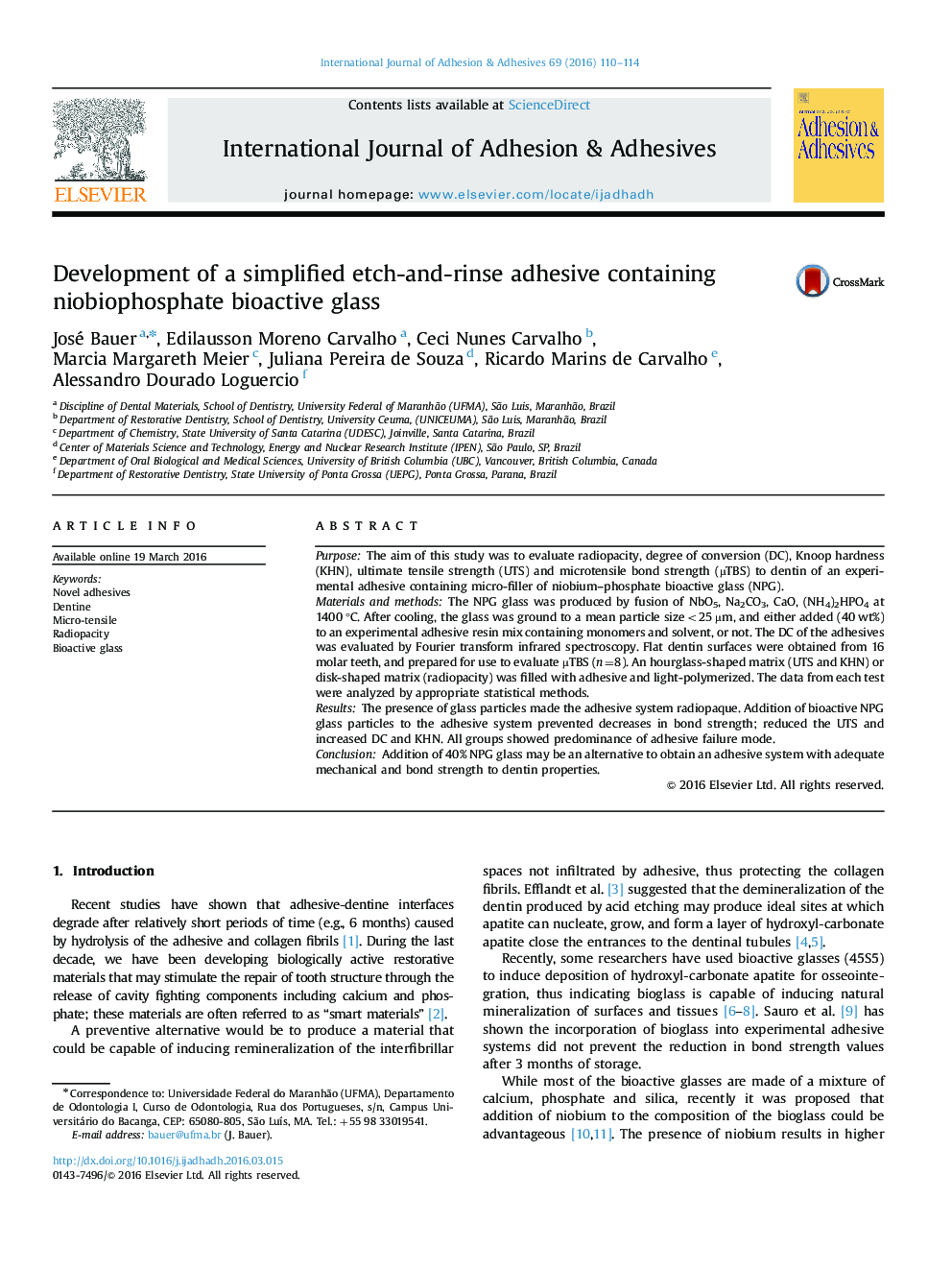| Article ID | Journal | Published Year | Pages | File Type |
|---|---|---|---|---|
| 779842 | International Journal of Adhesion and Adhesives | 2016 | 5 Pages |
PurposeThe aim of this study was to evaluate radiopacity, degree of conversion (DC), Knoop hardness (KHN), ultimate tensile strength (UTS) and microtensile bond strength (µTBS) to dentin of an experimental adhesive containing micro-filler of niobium–phosphate bioactive glass (NPG).Materials and methodsThe NPG glass was produced by fusion of NbO5, Na2CO3, CaO, (NH4)2HPO4 at 1400 °C. After cooling, the glass was ground to a mean particle size<25 µm, and either added (40 wt%) to an experimental adhesive resin mix containing monomers and solvent, or not. The DC of the adhesives was evaluated by Fourier transform infrared spectroscopy. Flat dentin surfaces were obtained from 16 molar teeth, and prepared for use to evaluate µTBS (n=8). An hourglass-shaped matrix (UTS and KHN) or disk-shaped matrix (radiopacity) was filled with adhesive and light-polymerized. The data from each test were analyzed by appropriate statistical methods.ResultsThe presence of glass particles made the adhesive system radiopaque. Addition of bioactive NPG glass particles to the adhesive system prevented decreases in bond strength; reduced the UTS and increased DC and KHN. All groups showed predominance of adhesive failure mode.ConclusionAddition of 40% NPG glass may be an alternative to obtain an adhesive system with adequate mechanical and bond strength to dentin properties.
